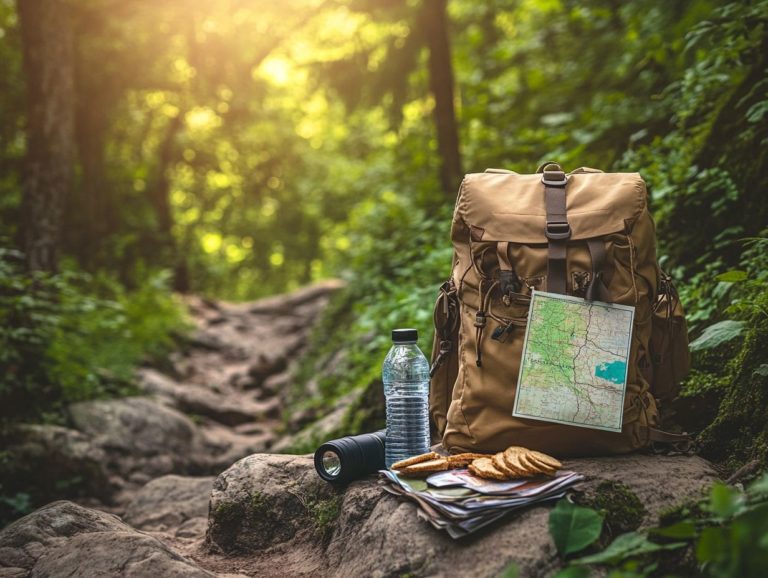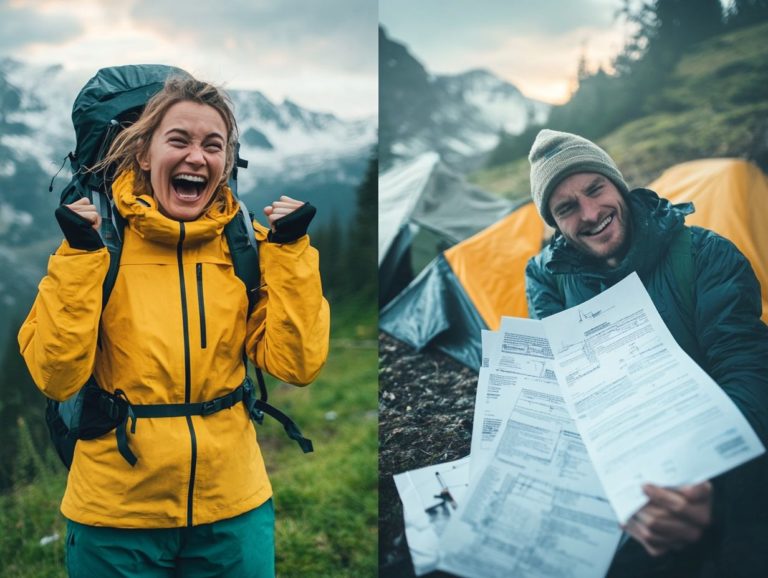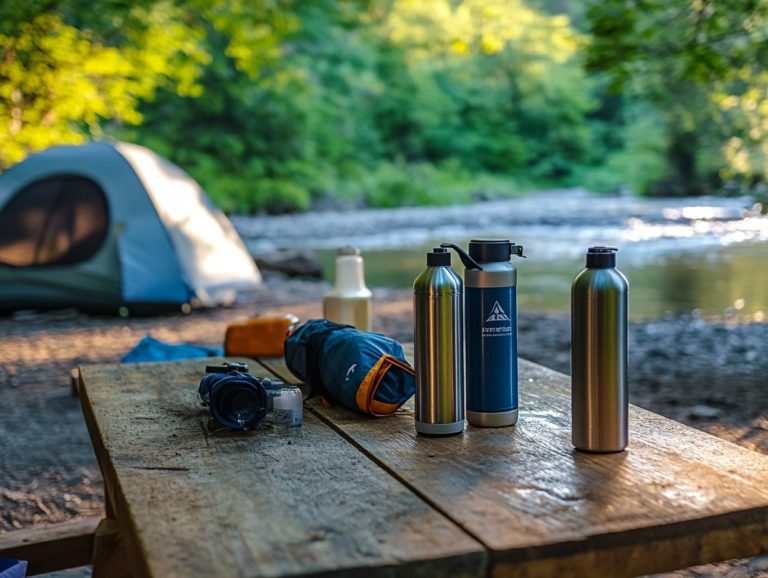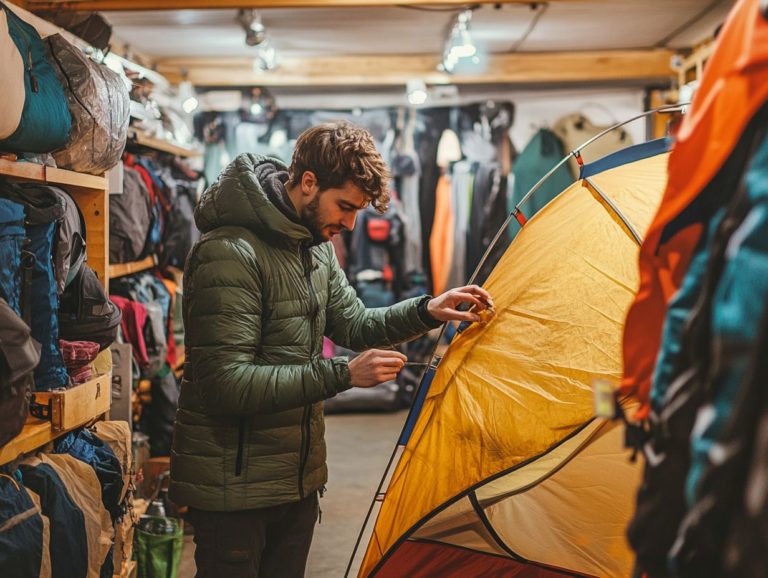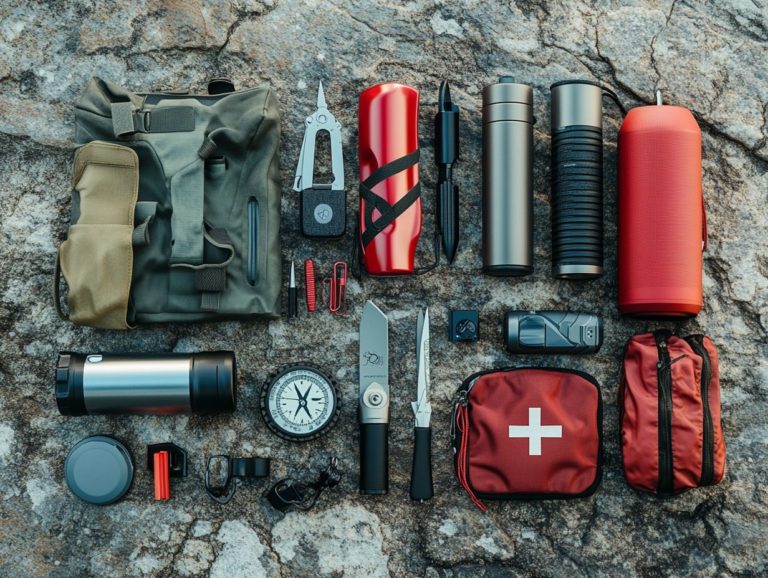What is the Best Way to Dry Outdoor Gear?
When it comes to your outdoor adventures, maintaining your gear in peak condition is essential for optimal performance and longevity.
Properly drying your outdoor equipment not only prepares it for your next excursion but also protects it from the damaging effects of mold and mildew.
Get ready to discover the best ways to dry your gear so you can hit the trails with confidence! This article provides effective drying methods, ranging from air drying to utilizing a dehumidifier, and gives tailored tips for specific types of gear, such as clothing, footwear, and camping essentials.
Discover how to care for your equipment, ensuring it remains dependable for all your adventures. Don t let damp gear ruin your adventure learn how to dry it properly today!
Contents
Key Takeaways:
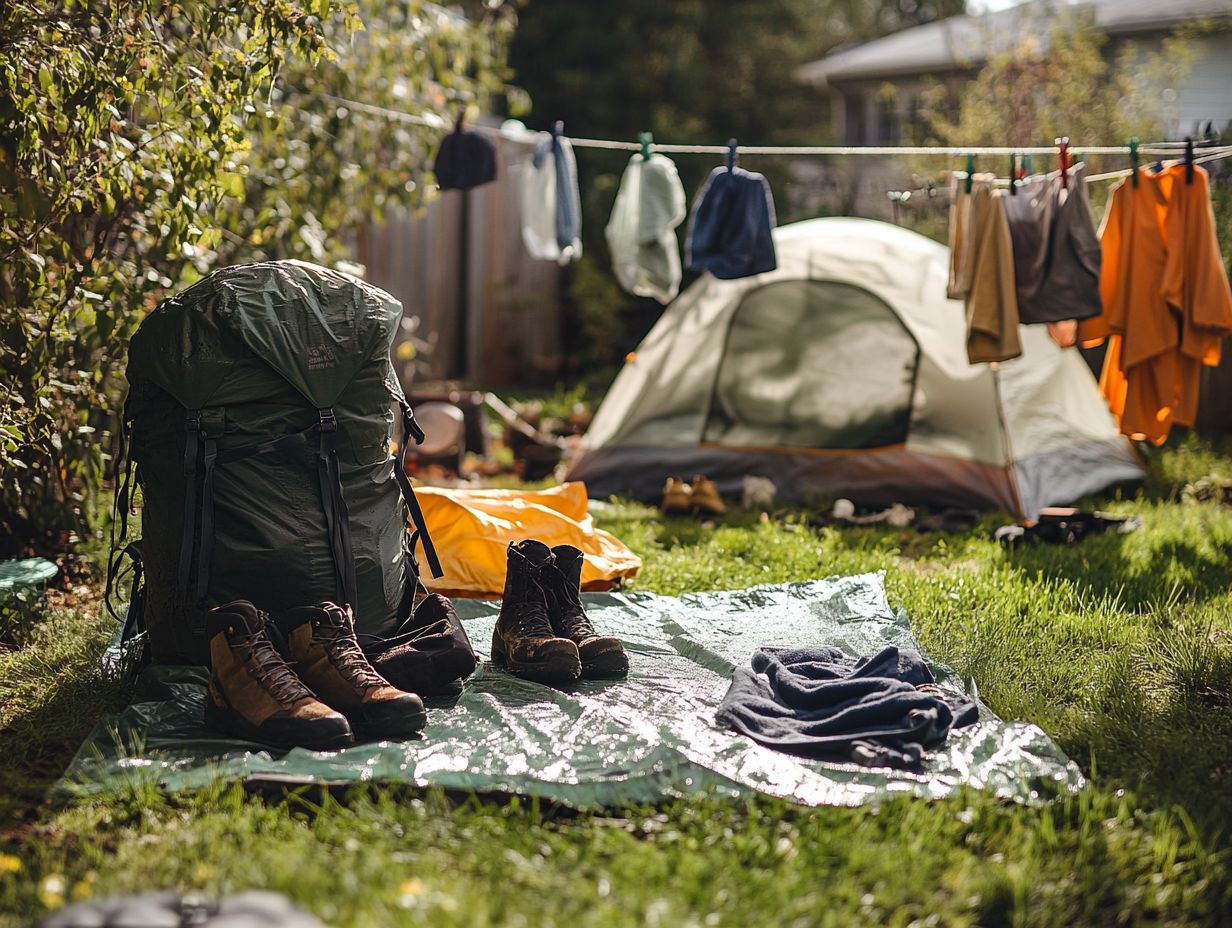
- Properly drying outdoor gear is crucial for its maintenance and longevity.
- Air drying is the most effective and safest method for drying outdoor gear.
- To prevent mold and mildew, always ensure outdoor gear is completely dry before storing it, and regularly clean and inspect the gear for any signs of growth.
The Importance of Properly Drying Outdoor Gear
Drying your outdoor gear is vital for preserving its longevity and effectiveness, especially when navigating unpredictable weather during adventures like camping or hiking.
By employing the right drying techniques think breathable fabrics and materials that pull moisture away from your body you can keep your clothing and equipment in peak condition while warding off unwelcome issues like mold and mildew.
Recognizing the significance of drying your gear not only protects your investment, but it also elevates your overall outdoor experience. For outdoor enthusiasts, adopting effective drying methods and prioritizing gear maintenance is essential, regardless of the conditions.
Why Drying is Essential for Gear Maintenance
Drying your outdoor gear is an essential practice that ensures its maintenance and longevity. Moisture buildup can invite mold and mildew, adversely affecting the insulation properties of the fabric.
This is especially critical for items made from synthetic materials. While these fabrics are designed to wick away sweat, they can easily become a breeding ground for bacteria if not dried properly. When exposed to prolonged dampness, their ability to trap warmth and provide effective insulation diminishes.
Natural fibers like wool are particularly vulnerable to damage from excessive moisture, leading to fiber breakdown and reduced performance. By utilizing effective drying methods such as air drying in a well-ventilated area or using specialized drying machines you can protect these valuable investments.
Implementing these strategies not only extends the lifespan of your gear but also enhances your overall outdoor experience, ensuring you remain protected and comfortable in various weather conditions.
Methods for Drying Outdoor Gear
Understanding the various methods for drying your outdoor gear is essential for maintaining its integrity and performance. This knowledge enables you to adapt to different conditions and ensure your equipment stays moisture-free.
Common methods include:
- Air drying hang your clothes on a clothesline or use a tarp to promote airflow.
- Machine drying which employs heat to expedite the process.
- Utilizing a dehumidifier a device that removes moisture from the air to swiftly reduce humidity levels in enclosed spaces.
Each drying technique has unique benefits. Selecting the right one can significantly enhance the longevity and effectiveness of your gear, particularly after a soaking hike or a weekend camping trip.
Air Drying
Air drying is a natural and effective way to dry your outdoor gear, utilizing the strength of airflow to eliminate moisture without risking damage to fabrics from excessive heat.
This method shines especially for items like tents, sleeping bags, and hiking clothes, which can face wear and tear if exposed to high temperatures in conventional dryers. To achieve the best results, pick the right conditions a dry, sunny day with gentle breezes will work wonders for evaporation.
Setting up a clothesline or tarp in a well-ventilated area will maximize your gear’s exposure to fresh air. Remember to space your items apart to encourage airflow. Tightly packed gear traps moisture rather than letting it escape.
By positioning your gear strategically, you can significantly improve drying times, ensuring your equipment is ready for your next adventure.
Machine Drying
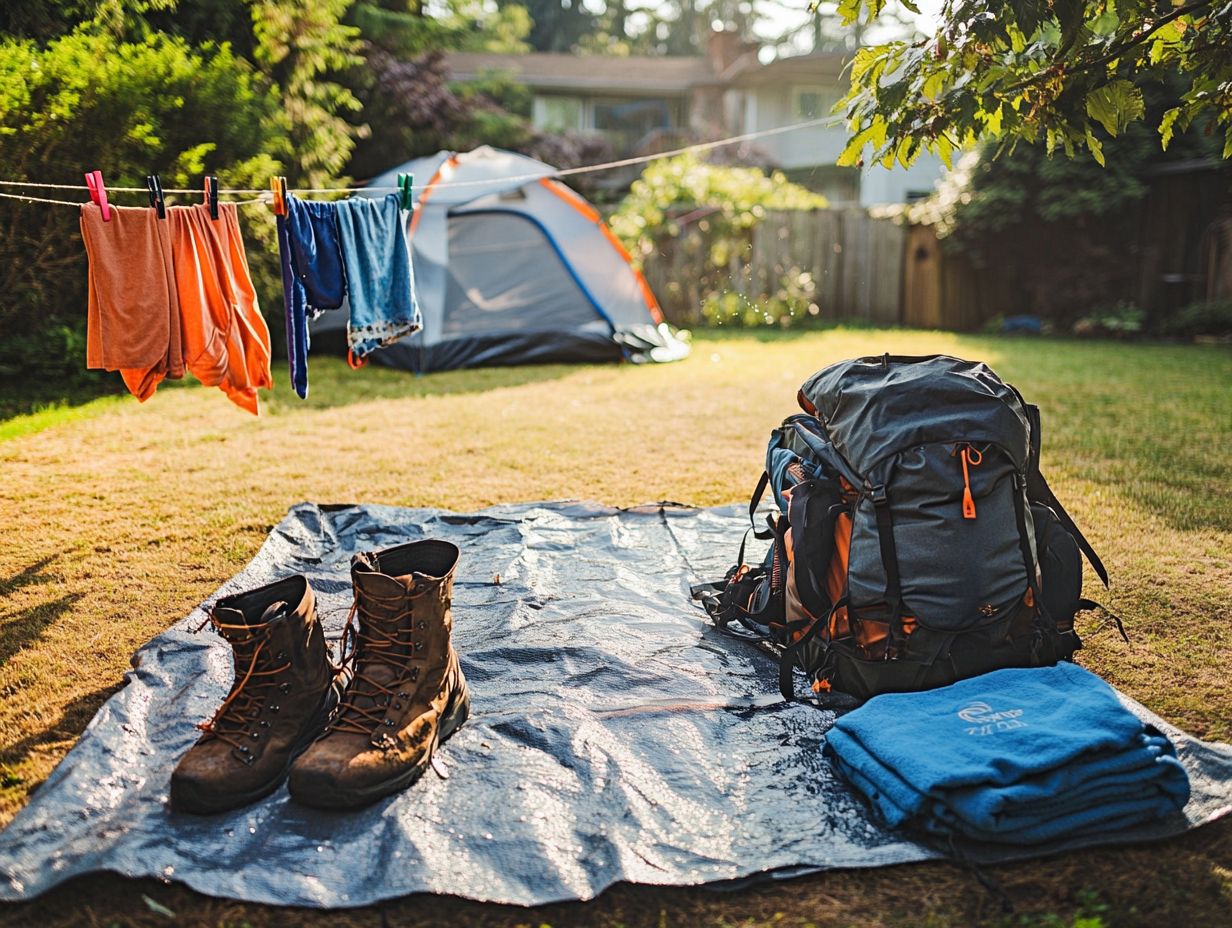
Machine drying is a convenient solution for quickly removing moisture from outdoor gear.
It uses heat and tumbling action to dry clothes and fabrics after wet adventures.
This method simplifies the post-trip cleanup process, making it especially appealing for those who relish outdoor activities and seek a reliable way to dry quickly.
While machine drying is undeniably efficient, it’s essential to consider which fabric types are best suited for this approach. Fabrics like cotton and polyester typically thrive in this environment, whereas delicate materials such as silk or wool may require more gentle handling.
By adopting the recommended settings like low heat for sensitive fabrics you can maintain garment integrity. However, remain mindful of potential drawbacks, such as shrinkage or fading. Paying careful attention to care labels will guide you in preventing damage and prolonging the lifespan of your favorite pieces.
Using a Dehumidifier
Using a dehumidifier is an excellent strategy for drying outdoor gear, especially in enclosed or humid settings. It actively reduces moisture levels in the air, creating ideal conditions for effective drying.
By continuously drawing in damp air, the dehumidifier cools it and removes excess moisture, which collects in a reservoir or gets expelled through a drainage system. This not only accelerates the drying process but also helps prevent the growth of mildew and mold, both of which can shorten the lifespan of your gear.
Whether it’s camping gear, hiking backpacks, or wet clothes, using a dehumidifier in basements or storage spaces can significantly improve overall air quality and protect your belongings from harmful humidity. To get the most out of your unit, position it centrally and check the filter regularly for optimal moisture control.
Tips for Drying Specific Types of Gear
Drying particular types of outdoor gear demands specialized techniques to ensure effectiveness while preserving the integrity of each item, be it clothing, footwear, or camping equipment.
The materials and intended use dictate the most efficient methods; for example, quick-dry fabrics thrive when air-dried on a clothesline, while synthetic footwear often benefits from machine drying to maintain its shape.
Use the right drying methods to quickly remove moisture and gear up for your next adventure!
Clothing and Fabrics
When you dry clothing and fabrics designed for outdoor activities, it’s crucial to select effective techniques that complement the material properties, particularly those fabrics that dry quickly.
For example, while synthetic fabrics can typically handle a low heat setting in the dryer, natural fibers like cotton or wool are best air-dried to avoid shrinkage and damage.
Towels and fleece garments may appreciate a quick fluff in the dryer before finishing up on a line, allowing for improved airflow.
Ultimately, understanding the fabric type and its recommended care instructions not only extends the life of your clothing but also elevates your performance during outdoor adventures.
Footwear
Properly drying your footwear is essential for maintaining their insulation and moisture resistance, especially with synthetic materials that tend to cling to water during rainy hikes or damp camping trips.
This process is not merely about getting rid of excess moisture; it helps maintain the shape and function of your shoes over time.
One effective technique is to loosen the laces and remove the insoles, allowing air to circulate freely this can significantly speed up the drying process.
You ll find that using newspaper can be incredibly helpful; stuffing your shoes with it helps absorb moisture while maintaining their structure. Just steer clear of direct heat sources like radiators, which can warp materials.
Instead, opt for a well-ventilated area to create the perfect environment for natural drying, ensuring both comfort and longevity for your favorite footwear.
Camping Equipment
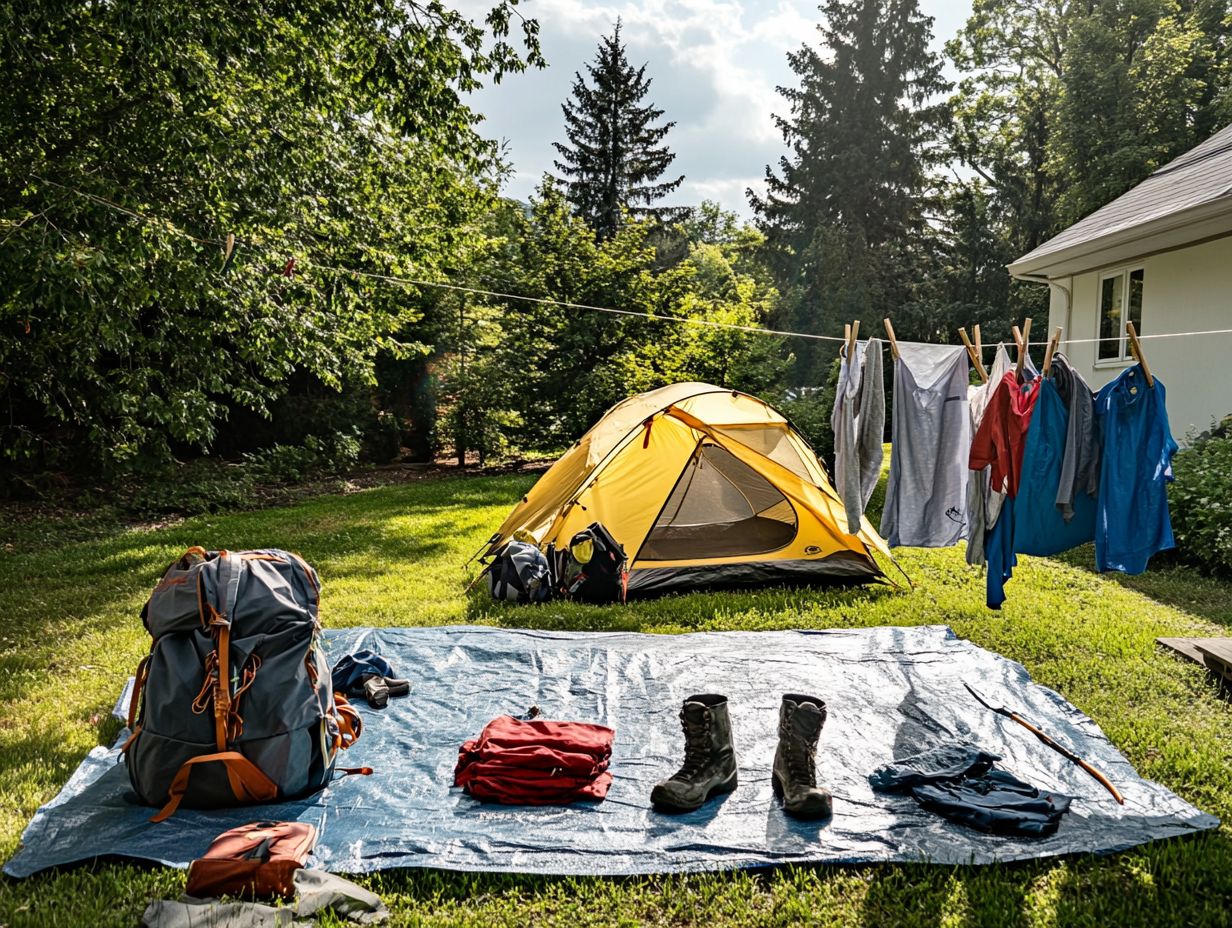
Your drying strategies depend on your gear type, such as tarps and tents, which require careful handling to prevent moisture buildup.
Understanding the specific drying needs of your items can profoundly impact their lifespan. For example, with tents often larger and crafted from waterproof materials you should hang them in a well-ventilated area to ensure every section dries thoroughly. Tarps should be spread out flat to avoid creasing, as those creases can trap water and lead to mold.
Sleeping bags may require a different approach. Air drying outdoors can be effective, but make sure there’s gentle wind circulation. Other fabrics might need a more controlled environment to prevent any damage. Paying attention to these details is essential for preserving the quality of your camping gear.
Preventing Mold
Preventing mold is crucial to keep your gear in top shape! Excess moisture creates the perfect environment for mold to thrive, jeopardizing the performance and longevity of your equipment.
To effectively combat mold, adopt strategies such as:
- Thorough drying techniques, including quick-dry methods
- Regular inspections of your gear after exposure to moisture
- Proper storage solutions that help control humidity levels
By understanding these key factors, you can ensure your gear remains mold-free, preserving its durability even in challenging weather conditions.
How to Avoid and Remove Mold
To avoid mold on your outdoor gear, implement active steps that encompass effective drying techniques and moisture control practices.
These steps should focus on immediate cleaning and long-term maintenance to ensure those pesky fungi don t become a recurring issue. Regularly inspect your gear for any signs of moisture accumulation, and ensure proper ventilation when storing your items. Using products that soak up moisture, like silica gel packs, can also help keep your storage areas dry.
For cleaning, a simple mixture of water and vinegar can effectively eliminate existing spores, while a gentle scrub with a brush can tackle stubborn spots. By integrating these preventive measures and cleaning techniques into your routine, you can significantly reduce the risk of mold developing on your cherished outdoor items.
Frequently Asked Questions
What is the Best Way to Dry Outdoor Gear?
The best way to dry outdoor gear depends on the type of gear you have. For clothing, air drying either by hanging or laying flat is typically best. For durable gear like backpacks or tents, a combination of air drying and low heat settings in the dryer is recommended.
Can I Use a Hair Dryer or Heater to Dry My Outdoor Gear?
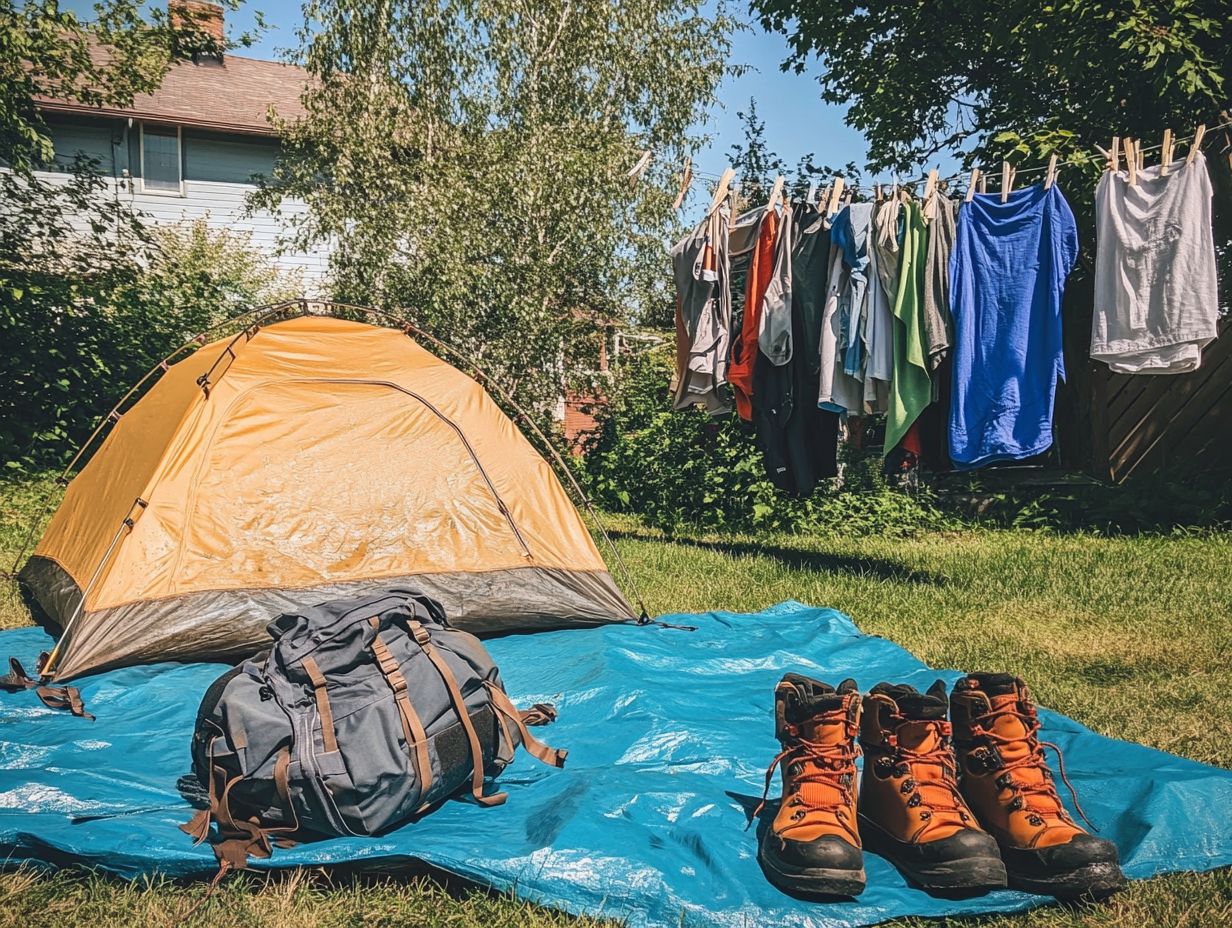
No, using direct heat sources like hair dryers or heaters can damage your outdoor gear. Stick to gentle and indirect heat sources when drying your gear.
How Should I Dry My Wet Hiking Boots?
The best way to dry wet hiking boots is to remove the insoles and laces, stuff the boots with newspaper, and place them in a well-ventilated area. Avoid using direct heat or placing them in the dryer, as this can cause shrinkage and damage.
Is it Okay to Put My Rain Jacket in the Dryer?
It depends on your rain jacket’s material. Always check the care label first to see if the manufacturer recommends machine drying. If permitted, use a low heat setting and remove the jacket promptly once dry to prevent shrinkage.
What is the Best Way to Dry a Wet Sleeping Bag?
The best way to dry a wet sleeping bag is to hang it outside in a well-ventilated area or use a dryer on a low heat setting with a few tennis balls to help fluff the down. Avoid high heat or direct sunlight, as this can damage the sleeping bag’s materials.
Can I use a tumble dryer to dry my waterproof gear?
Using a tumble dryer for waterproof gear is risky. The heat and movement can damage the protective coatings.
Instead, let your gear dry naturally.
If you must use a dryer, choose a low heat setting and exercise caution.

